


The collective excitement of Deutschtown restaurateurs is real. Revival of the area – walkable, filled with historic row houses, close to museums, stadiums and Downtown – has been long-discussed, but recent movements have stoked hope.
“Some of things that made it a cool neighborhood back in the day are one of the reasons it’s going to have a revival, just how many churches, breweries and small businesses,” says Siempre Algo’s Brian Hammond, who owns his building on main drag E. Ohio Street. “This is a very self-contained neighborhood.”
Three addresses in the 600 block of E. Ohio Street are being developed as part of a $4.9 million plan for storefronts and office space. A few blocks away, the storied, shuttered-since-2017 James Street Speakeasy (née Tavern) building is being readied to reopen by new owner Jonathan Iams, with both a jazz club and a restaurant. Same for Park House, one of the city’s oldest bars before it closed in late 2020: It could reopen as early as spring.
“I see this neighborhood, over the next 5, 10 years, just really coming into something so cool,” says Fig & Ash co-owner and executive chef Cory Hughes.
Plenty of changes have already happened in the restaurant realm: Park House’s neighbor, The Coop Chicken & Waffles, launched during the pandemic, as did nearby Fig & Ash. They joined Deutschtown staples old (Max’s Allegheny Tavern, which dates to the late 1970s) and newer (Allegheny City Brewing, 2016), a mix all Pittsburghers can enjoy.
KEY
$ = $15 and under
$$ = $15-$25
$$$ = $25-$45
$$$$ = $50 and up
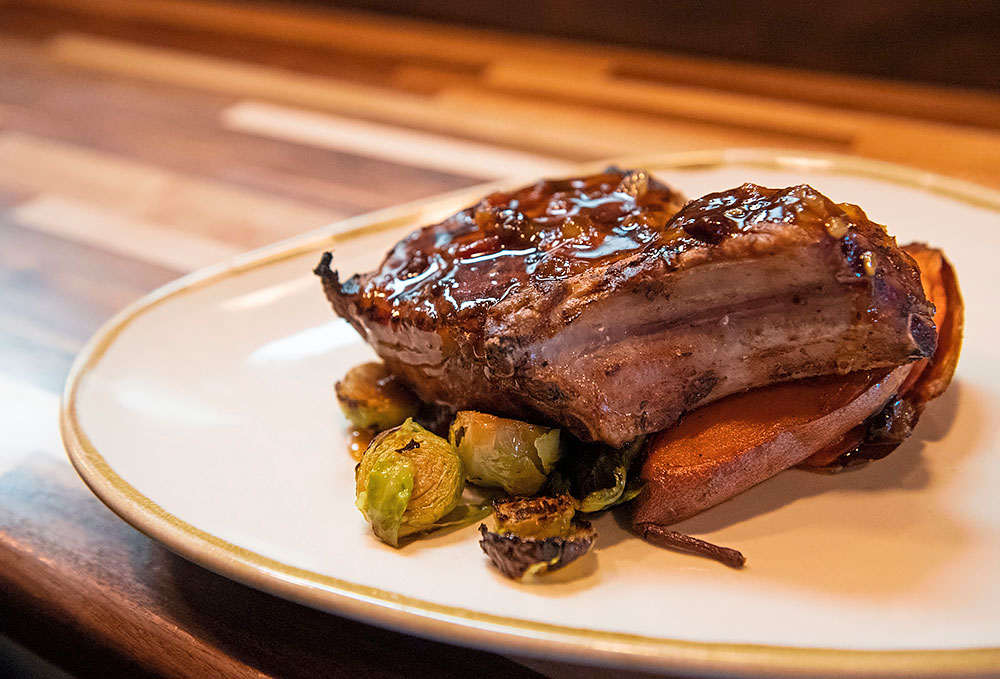
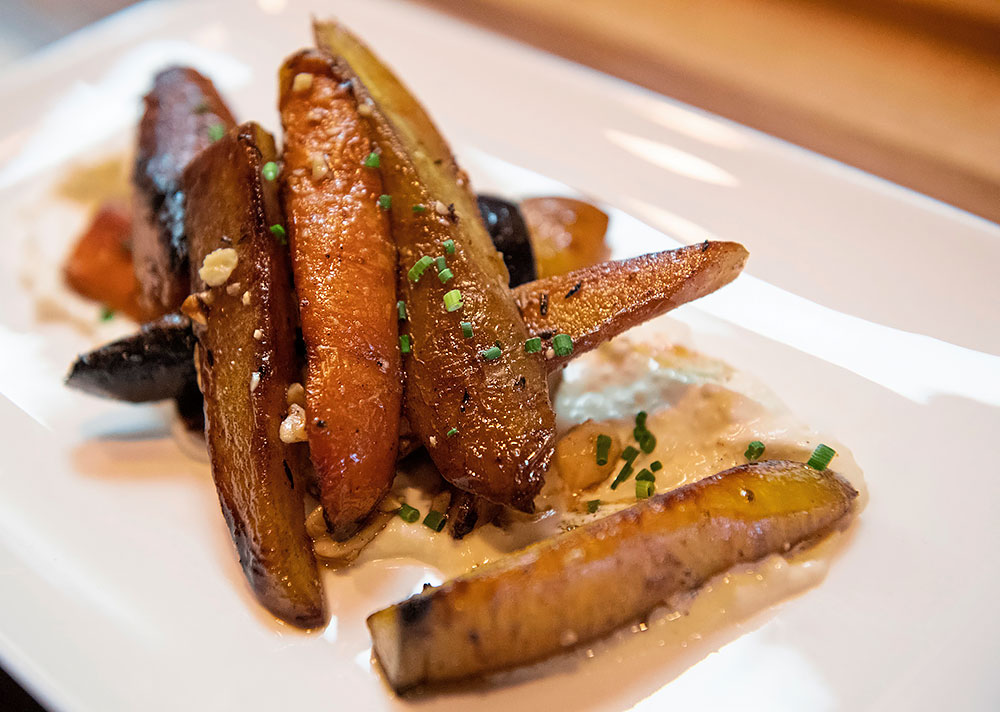


Fig & Ash co-owner Alex Feltovich didn’t simply open a restaurant, he opened it in his favorite city neighborhood. Reared in the South Hills, his nightly routine as a kid involved a trip to the area. His dad would round up him and his sister, and point the car toward the North Side to pick up his mom from work at Allegheny General Hospital.
“My mother was a nurse and transplant coordinator at AGH for 38 years,” Feltovich says.
He’s there pretty much daily once again, now with his brother-in-law, Cory Hughes, a Philadelphia native who came here for culinary school, and later went on to work for Big Burrito’s Eleven and, more recently, Google. They combined their respective front and back of the house talents and launched Fig & Ash in September 2020.
The path had its obstacles – renovating a building that had been vacant for years brought delays, and then in March 2020 … well, you know. But past is past: As executive chef Hughes says, “Oh, we got plans.
For Fig & Ash, it’s make sure we always stay on brand, and ‘brand’ means comfort food, amazing service, making people feel like they’re at home. As long as that happens, I feel like there’s a million opportunities in this neighborhood over the next five to 10 years.”
The food: When your thing is comfort food, it’s pretty easy to understand why you’d want a wood-fired oven. That investment is put to good use with dishes including a cauliflower starter, the charred florets combined with a cauliflower-tofu puree, miso garlic and snap peas. Heirloom carrots, on the menu since day one, also highlight the star ingredient, which is caramelized courtesy of those flames and supported by honey, whipped ricotta and Marcona almonds.
Other appetizers include a butternut squash soup topped with an apple mascarpone; a pork belly is glazed with bourbon apple butter.
The shepherd’s pie takes a legume left with lentils adding the protein, but if you’re craving meat, there’s the short rib and pork belly meatloaf, served with horseradish crème fraîche, and a ribeye with roasted root vegetables. Other mains include Hudson Valley duck, with roasted pear, and striped bass with butternut squash purée.
“At the end of the day, we’re just trying to do wood-fired comfort food. We’re not trying to reinvent the wheel,” Hughes says.
Desserts continue the comfort theme, and include an orange blossom rice pudding and green apple popover.
The drinks: Six custom cocktails include a punch with two types of rum, pomegranate and ginger beer, and a mezcal-based drink fired up with Chile liqueur. Add to that mocktails; the Hey Hot-Tea is winter-proofed with lapsang tea and hot honey. Beers include locals ACB and Hop Farm, and the curated wine list offers nice variety.
514 E. Ohio St.; figandashpgh.com
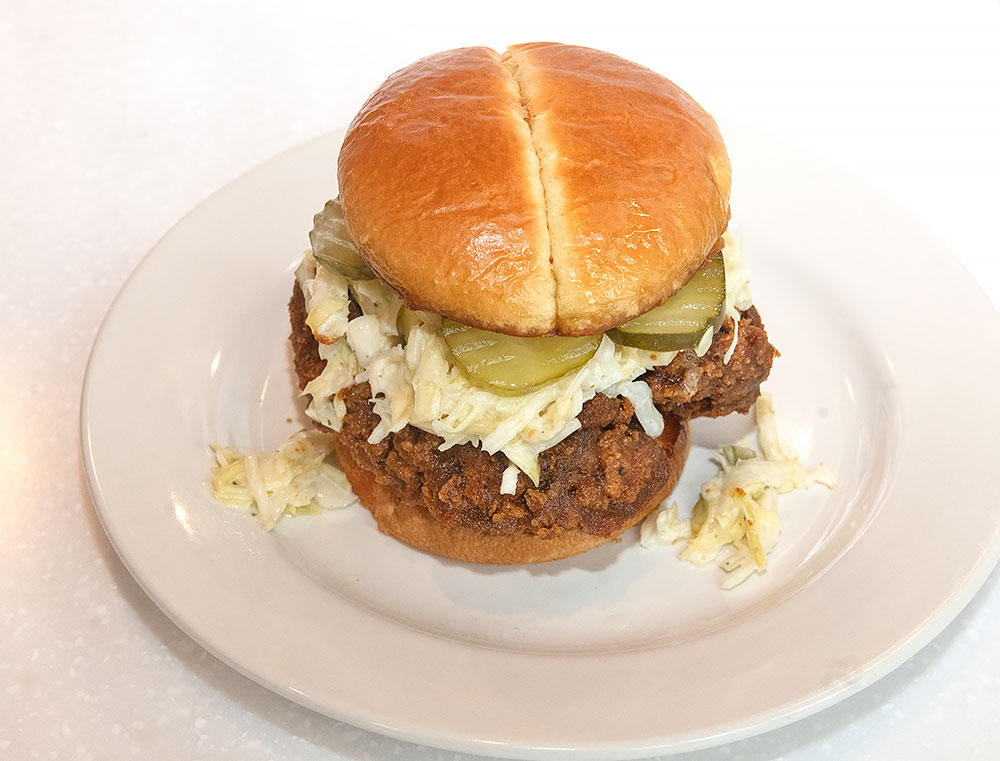

The Coop landed in Deutschtown partly because of the windows. The nearly all-glass front overlooks East Ohio Street, and five large panels peer onto Cedar Avenue, and they worked as a billboard for the potential within.
Co-owner Nicki Cardilli recalls driving past the vacant space at the busy intersection in 2019 — “because I had a doctor’s appointment or something” — and noticing a for-lease sign.
“I loved the fact that more businesses were opening on East Ohio Street,” she says. Also: “The windows are great.”
The food: Launched as a food truck in 2016, The Coop Chicken & Waffles officially threw its (glass) door open in Deutschtown in August 2020. (The seasonal food truck is back in action this month.) Cardilli and partner Justin Fitzgerald are serving an expanded menu at the takeout-only restaurant, but, as always, “most of the recipes that we have are family recipes, from Justin and his family in Texas.”
How you want that Fitzgerald fried chicken is your call, with tenders, drumsticks and wings among the choices; toppers include chipotle ranch, maple syrup and good ol’ butter. Waffles include Belgian, cheddar-cornbread and seasonally rotating dessert options. A Belgian waffle dressed up with cinnamon roll filling and a glaze of cream cheese is currently on the menu.
Sides include jalapeño hushpuppies, fried pickles and mac and cheese.
The menu has pretty much stayed the same since the storefront opened, though one newbie is pretty much guaranteed to be a draw: “We just added a hot chicken sandwich. It’s really good.”
The drinks: Get your sweet tea here.
401 E. Ohio St.; thecooppgh.com


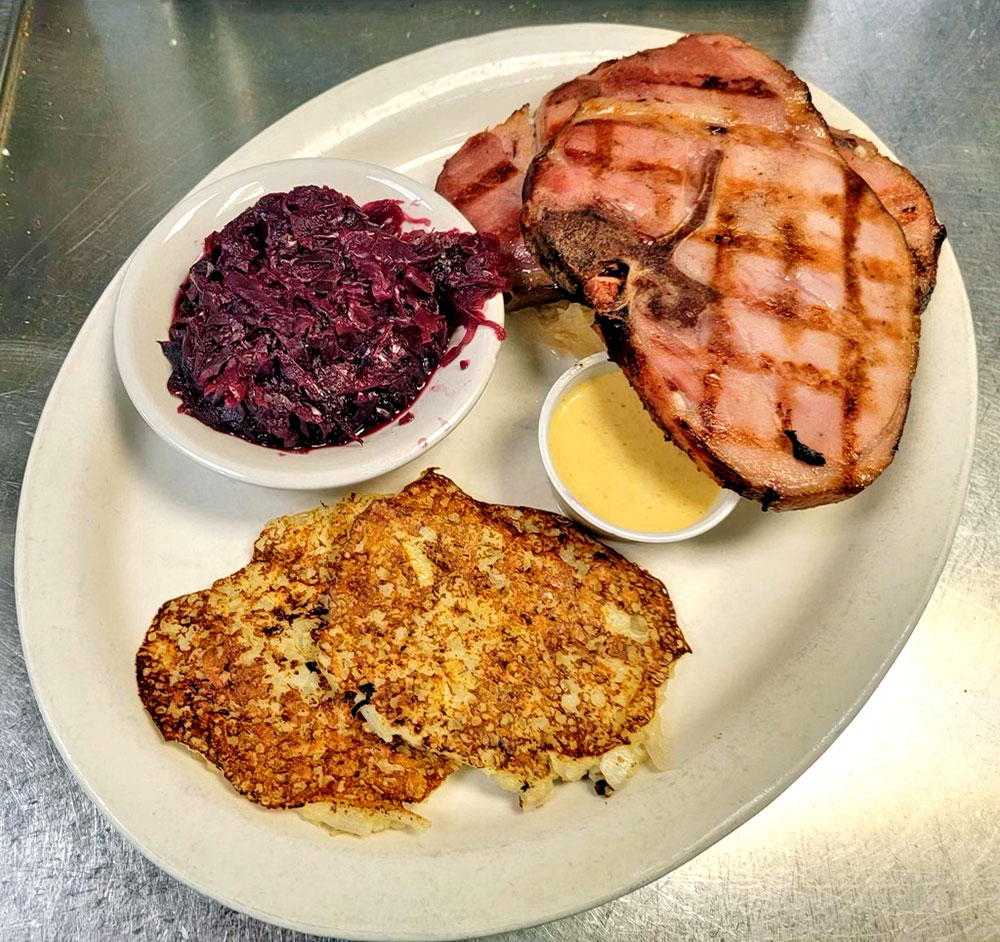
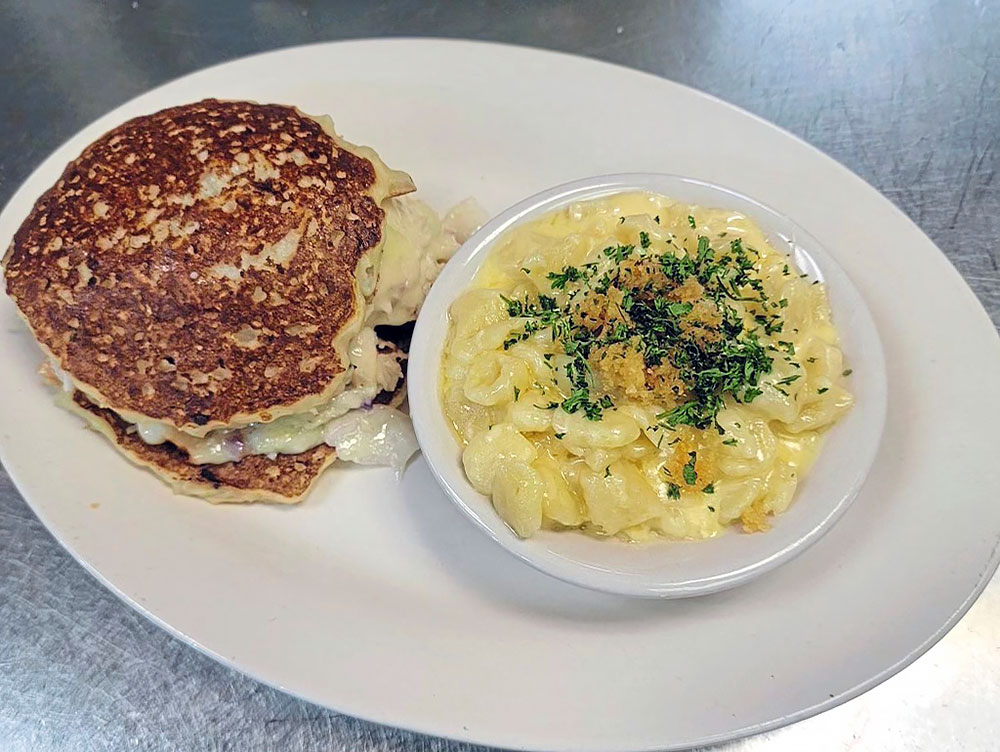


Every neighborhood needs a Max’s, where the building touched the early years of the previous century. Where you can sit at the bar, chatting with 40-year employee Jan Puglin, or head to a lace-curtained dining room, led by 44-year employee Jean Cerra. This isn’t just a place where everybody knows your name — they know your kids’ and kids’ kids’ names as well.
Bill and Diane Diegelman bought Max’s in the mid-1990s, and these days it’s run by their son, Doug Diegelman. The family kept the menu focus the same as it had been, on German cuisine.
The food: Hard to believe, but not every menu has a sausage section. Max’s serves Usinger’s wursts — knack, brat and weiss — and the sausage platters (including a sampler) are among the best sellers, manager Sara Kennelly says. Sausages are accompanied by house-made apple butter, sauerkraut, rolls and sides, with potato pancakes, späetzle and German potato salad among your choices.
Keep on the links via a sandwich: braunschweiger makes two appearances, one on Max’s Bavarian Club, where it’s layered on rye bread with bacon, hard-boiled egg, onion and more. Less-controversial corned beef is the star of the popular Reuben, and you can get that classic grilled between pumpernickel bread or potato pancakes.
German entrees include Kassler Rippchen, centered around pork loin long-simmered in sauerkraut. And then there are the schnitzels, thinly pounded veal offered five ways, including the Jäger Schnitzel, with the cutlet sauced with a deep brown mushroom gravy.
If you’re just a little hungrig, bar bites include Bavarian pretzels (stuffed with cheddar if you like), herring in sour cream, or a sausage and cheese plate.
The drinks: Full bar, including Pittsburgh Brewing Company’s Dutch Club Light and Dark.
537 Suismon St.; maxsalleghenytavern.com

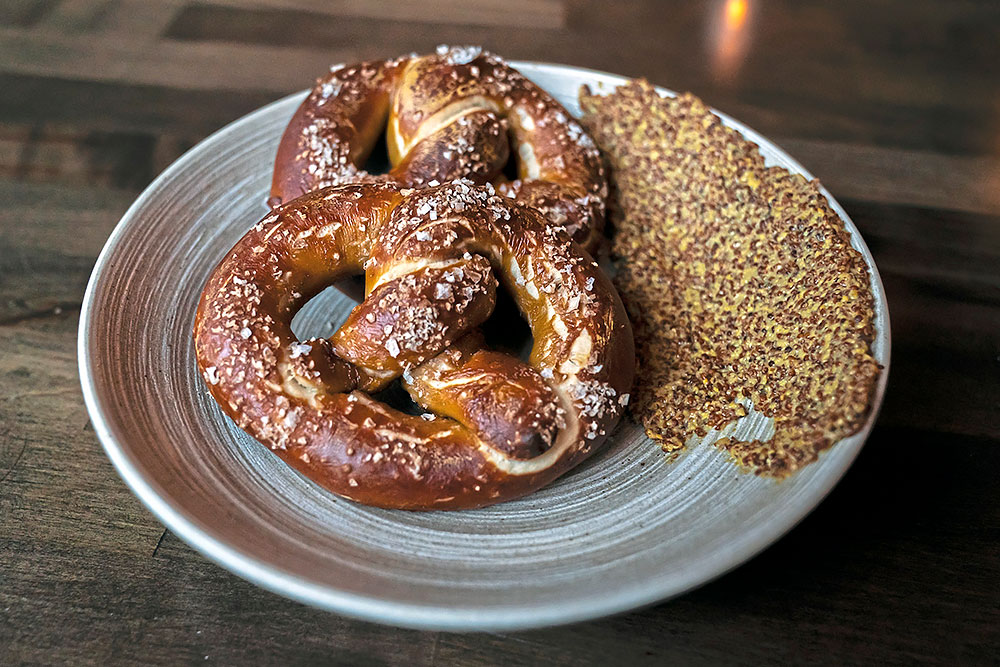
When Brian Hammond was preparing his new restaurant for opening, he heard something he never had before — neighbors offering their time.
He’d launched restaurants before, including the massive Echo in Cranberry, and folks were always curious, but more about the cuisine. In Deutschtown, “I feel like almost everybody said, ‘What can we do to help? We’re excited about this.’” Community groups, neighboring businesses and residents all have “a real sense of investment” in the area, he says.
It was a three-year process all told, from buying the building, known for decades as Shrim’s Garden Cafe, on through numerous renovations (the tin ceiling and some original woodwork are all that remain, Hammond says, pointing around the dining room), until Siempre Algo opened in August 2018. Thanks to all the neighborhood love, “it was a really positive experience.”
The food: Seasonality drives the menu more than a particular culinary tradition. (Hammond has both Mexican and French cooking on his resume, including at Rick Bayless restaurants in Chicago and Hyeholde in Coraopolis.) “We just look for the things that make us excited, and show the ingredients in the best light.”
That results in a focused menu, one that changes often and currently includes a winter stew, with both pork belly and shoulder in a poblano broth, and veal sweetbreads, with local mushrooms.
One item that will always remain, however, are the Bavarian-style soft pretzels, made from a sourdough ferment. A nod to the neighborhood’s history, it’s been on the menu since the beginning.
COVID closures allowed for time to do deep dives into honing skills, too, including breadmaking (baguettes are now a staple) and gardening (on about two-thirds of the roof).
The roster of desserts — passion fruit tartlet, bittersweet flourless chocolate cake — is led by Hammond, who took on the role of pastry chef during the pandemic, a first in his 23-year career: “It’s fresh, it’s challenging, and I would love to get deeper into it.”
The drinks: The history of Shrim’s bar lives on. Sit at the sleek bartop and order a cold beer from a solid list (including locals Arsenal and Helltown Brewing). Flip to the cocktail menu, and the decision-making intensifies; the Beets Me, with blanco tequila, mezcal, golden beet simple syrup, ginger bitters and orange juice, is exemplary of the dozen thoughtful creations. The extensive wine list includes more than 30 by the glass, from sparklers on through Ports.
414 E. Ohio St.; siemprealgopgh.com


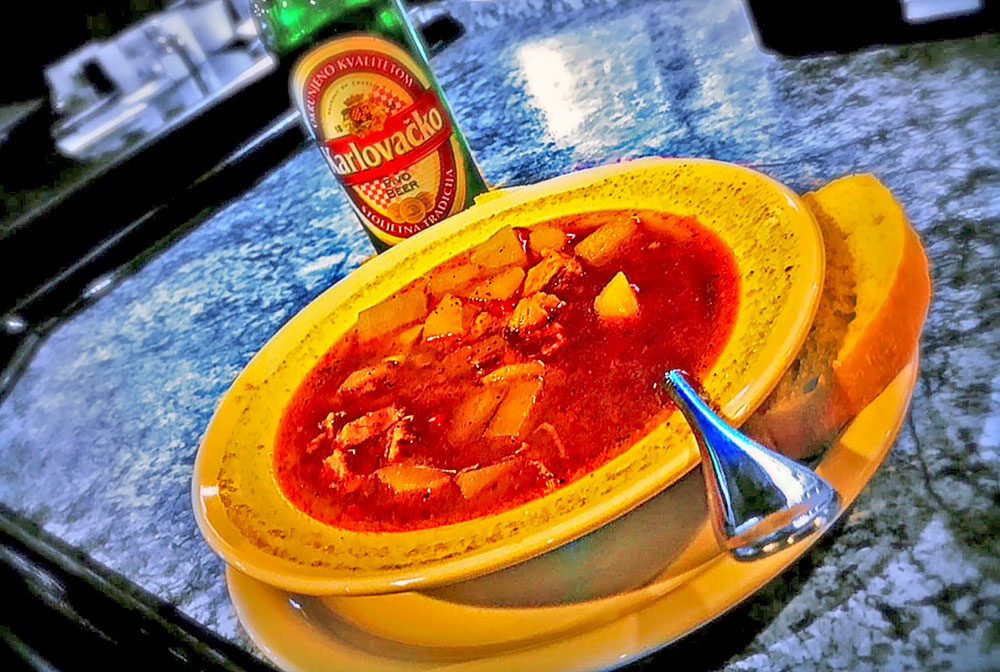
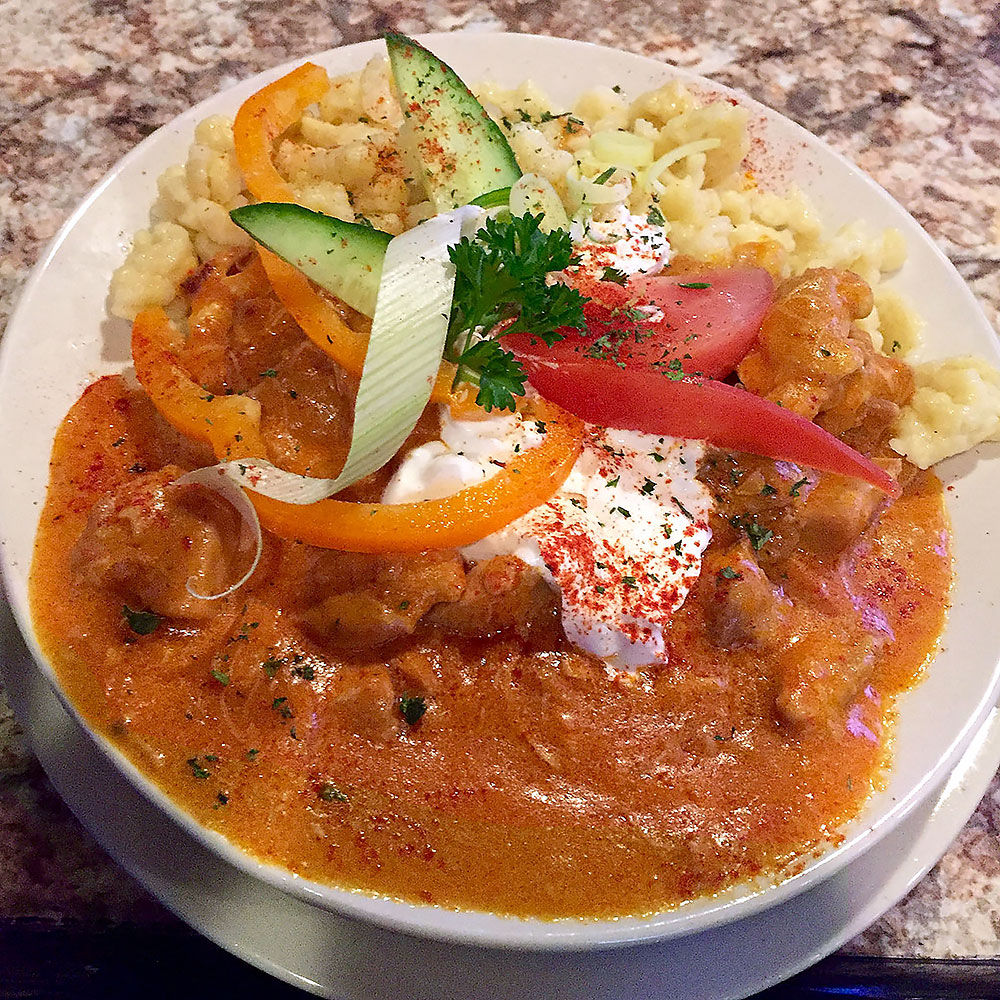


Judy Torma isn't technically a native Hungarian, but she’s pretty darn close. Born eight months after her parents fled the region and landed in Pittsburgh, Hungarian was her first language, and, thanks to a mother who was a fantastic cook and a father who never quite took to American cuisine, she ate the food every day.
After visiting Hungary with her parents as a teenager, “I went back and witnessed this reconnection to their family, my family, and it was mind-altering,” she says. “And that’s when I realized I was making a big mistake in not immersing myself in Hungarian culture.”
So she did, relearning the language at the University of Pittsburgh, and traveling often to Hungary (60-plus times to date). She lived there for a year to study folk dancing, met her husband, Michael Torma, who is now the chef at Huszár, and has a home on the western side near Austria.
When her parents passed — nine days apart — and she inherited the bar they owned, The Recovery Room, she knew what she wanted to do. She wanted to bring Hungary to Pittsburgh.
“There’s nothing like going back to your country and claiming your culture. And that’s what I do, and that’s what I try to deliver each and every day when people walk into this restaurant. They say they feel like they’re in someone’s home. They feel they’ve transcended to an older world.”
And while Huszár is currently a bit quieter than usual, as the pandemic sent the Hungarian musicians who enlivened the neighborhood spot back to their homeland, Torma is already plotting her next move: She’s in Hungary now, planning to reconnect with those performers, and “look for more inspiration, soak my roots, and see what I can bring back.”
The food: When Huszár opened, in late 2015, Torma wanted to rely on more than family recipes. “I wanted to launch a restaurant that was commercial, authentic Hungarian food,” she recalls, so she brought over a master chef from Hungary whose “sole purpose was to launch this menu.”
That menu remains, with authentic dishes including chicken paprikás, which finds dumplings and slow-cooked chicken in a sour cream-paprika sauce; steak topped with the versatile, tomato-based lecso sauce; and goulash, the comforting beef stew.
A creamed onion soup is topped with cheese and croutons, plus there’s húsleves daragaluskával, chicken broth made hearty with farina dumplings. Torma calls it “Hungarian chicken soup for the soul.”
Her go-to dish when in Hungary is called hagymás rostélyos, so of course it’s on the menu, too. She admits it “isn’t super-duper traditional Hungarian,” but if you like grilled steak, you’re probably going to enjoy it smothered in crispy onions and served with fried potatoes.
A pastry chef was also temporarily imported, so the dessert offerings could include sweet crepes (gundel palacsinta has apricot jam, walnuts and a splash of rum), and krémes, a take on a Napoleon that finds vanilla custard sandwiched between layers of thin, flaky dough.
The drinks: Full bar, with imported beers and wines.
627 E. North St.; huszarpittsburgh.com
.jpg)
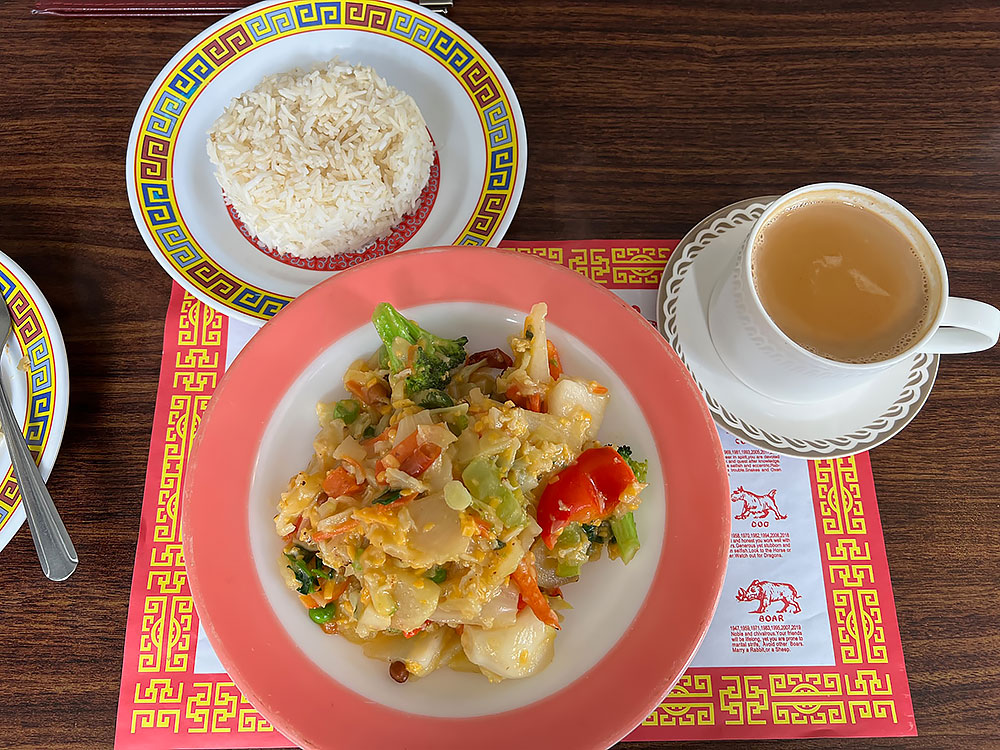
Do look up: If you don’t, you’ll walk right past Subba. The pan-Southeast Asian spot’s entrance is humbly tucked on Cedar Avenue, on the second floor above a vacant storefront. Locals are aware that Subba’s unassuming presence is a smoke screen for powerful flavors.
“Nobody knows about it! The best pork lo mein noodles in all of Pittsburgh,” neighbor (and Fig & Ash chef-co-owner) Cory Hughes says.
Soon enough, Subba will be streetside: Likely by September, owner Deo Subba should be in a newly renovated, ground-level space just strides away on E. Ohio Street, said North Side Leadership Conference interim director Dana Fruzynski.
Note (March 30, 2023): Subba moved into its new ground level East Ohio Street space in December. Update address to 422 E. Ohio St.
The food: Whatever the elevation, chef Subba serves a menu with traditional offerings from his native Nepal and nearby Bhutan, India and China.
This is a part of the world known for tolerance of higher Scoville Heat Units, including the Sichuan pepper’s intensity, but the amount of “beware of pepper” icons on the menu offer a reminder.
Momo, a Nepalese dumpling, is served here filled with minced, seasoned chicken or vegetables, and, with eight to a plate, works as a shared starter or a meal. Or order a Nepalese thali, a platter with your choice of protein (lamb, fish, goat among them) and numerous sides, including traditional lentil dal, rice, spinach, curried veggies and rice pudding.
A classic Bhutanese dish, datsi, is known to embrace chilis. A vegetarian option is packed with peas, red bell pepper, carrots, lentils and more; meats include pork, goat and chicken.
Indian entrees include biryani, curries and aloo paratha, a potato flatbread. Among the Chinese menu items are Hunan beef, Sichuan chicken and that famous (locally, for now) pork lo mein.
The drinks: Dairy-based lassi (mango, banana) are perfect for tempering the heat from that datsi; also, house-made chai, milk coffee.
700 Cedar Ave.; facebook.com/subbapittsburgh
.jpg)

Polly Higgins
Emily Matthews
Ed Yozwick
Laura Malt Schneiderman
Advertisement
Advertisement